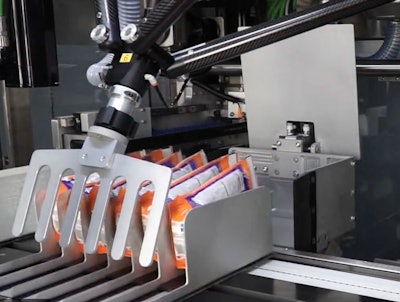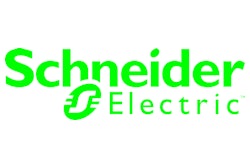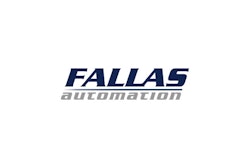
Fallas Automation first introduced the Adabot case packer to the food industry back in 2006. A delta-style robotic machine concept, its advanced kinematics and overall motion control are possible because of the performance capabilities of the PacDrive control platform from Schneider Electric. In the newest iteration of the Adabot series, the Adabot LV MKII, the need for sophisticated and fully integrated motion control is greater than ever. This new machine includes 10 axes of coordinated motion in addition to a product infeed component that previous iterations did not have.
Behind much of this machine development work is Walmart, which announced in 2016 that it had a strong preference for Retail Ready Packaging of standup pouches in a format where the pouches display vertically in a single row (see A in photo). The best way for an Adabot to produce this case format at acceptable speeds was to add to the machine what Chris Calabrese, Sales Director at Fallas, calls a “race track style” product belt. By using a race track style belt, Fallas is able to load cases independent of product coming into the case packer. More important, bags are now being placed into a case at the same time that another set of bags is indexing into the system. This ability to perform two different tasks simultaneously results in faster speed. The LV MKII is capable of 150 bags/min. Be sure to go to pwgo.to/5006 to see video of the case packer.
The Adabot LV MKII operates by indexing bags into the machine lying flat on an infeed belt. Before they come near the robotic end effector that transfers them into a case, they’re upended onto their sides as they feed into one of the flighted trains mounted on an elliptical-shaped race track. As soon as six bags occupy the six slots on the train, a Schneider servo motor whisks that train forward to one of two unloading stations. From these unloading stations the delta-style robot’s end effector sweeps the six bags into loading bucket A on one cycle and loading bucket B on the next cycle. Each of these buckets has a top door that closes to keep the bags in the proper orientation. Then the bucket pivots 90 deg to deposit the six bags, in perfect vertical orientation, into a case that waits below.
Naturally, not every retailer served by today’s food manufacturers is going to want the 5 in. W x 11 in. D Retail Ready Case for every shipment. Not to worry. The Adabot LV MKII can be changed over in 15 minutes to handle the more traditional formats (B & C in photo). For these formats, the sweep-style end effector is easily removed and replaced with a vacuum-style end effector.
The Schneider Electric LMC400 is the PacDrive controller Fallas Automation uses to perform the robotic kinematics and to control all of the other associated servo motors on the Adabot LV MKII. The machine is equipped with Fallas Automation’s own Adabot robot, and four servo motors are used to give it the four axes of motion it requires. Nine Schneider Electric motors on the machine are the SH3-070 variety and one is the SH3 055, while drives are from the Schneider Electric LXM62 Series. Mounted in the main control cabinet, each drive is assigned to two servo motors, which means the cabinet space is more compact than if each servo motor required its own drive. It also simplifies wiring connections.
Calabrese is pleased to have the Adabot LV MKII in the Fallas arsenal of solutions because previously the firm had to provide one machine that was specifically for the skinny “Walmart case” and a separate machine suitable for the more conventional retail-ready formats. “With this new machine a customer can pack all three patterns,” says Calabrese.
He’s also happy to have a machine whose axes of motion are all servo-based. “The microprocessor knows where everything is at all times,” he notes. “If some of the machine’s actuations are based on pneumatics, you need proximity sensors to convey positioning information to the controller. But that means relying on on/off sensors instead of the accurate encoder-based servos running on microprocessor code that’s 10 times faster. If you’re not all servo, it’s more challenging to get positioning messages back and forth fast enough and accurately enough to prevent crashes.”


























